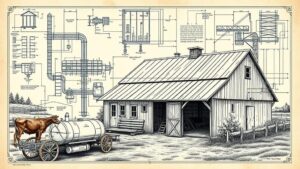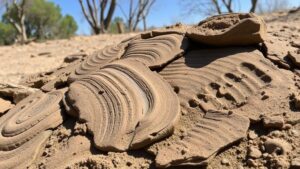Mapping Disused Freight Yards for Early Transportation Artifact Discoveries
Mapping Disused Freight Yards for Early Transportation Artifact Discoveries
The examination of disused freight yards presents a significant opportunity for the discovery of early transportation artifacts. These locations, often overlooked, can serve as valuable archaeological sites that unveil the transformative periods of freight transport in urban development. This article delineates the methodology, historical significance, and potential findings associated with the mapping of disused freight yards, providing a framework for future research in this domain.
Introduction
The decline of railroads in the late 20th century resulted in numerous freight yards being abandoned across North America and Europe. Such sites, once bustling hubs of transportation logistics, now lay dormant, posing questions about their historical usage and potential archaeological findings. This research aims to identify and map these locations, facilitating early transportation artifact discoveries and contributing to the broader understanding of industrial evolution.
Historical Context
Freight yards emerged as pivotal infrastructures during the industrial revolution. In the United States, the establishment of major freight yards began in the early 1800s, with notable examples such as the Chicago Union Station (opened in 1925) and the Pennsylvania Station in New York, inaugurated in 1910. function of these freight yards was not only to facilitate the movement of goods but also to serve as gathering points for trade, which significantly contributed to urban growth.
According to the National Museum of Transportation, freight yards played a crucial role in transporting over 1.9 billion tons of freight annually by the 1950s, indicating their importance in the economy. But, as transportation modes diversified–with air and truck transport becoming more prevalent–many of these yards faced closure, leading to their disuse.
Methodology for Mapping
The mapping of disused freight yards involves a multi-step process combining historical research and modern technological tools. The following methodologies can be employed:
- Historical Documentation Review: An initial review of historical records, maps, and city planning documents can pinpoint the locations of now-defunct freight yards.
- GIS Technology: Geographic Information Systems (GIS) can be utilized to create layered maps that integrate historical data with current landscapes, enhancing visualization.
- Field Surveys: Physical surveys of identified sites can facilitate the discovery of remnants of historical structures and artifacts.
Potential Findings
Mapping disused freight yards could lead to numerous archaeological findings, including:
- Historical artifacts like shipping containers, original rail tracks, and signage.
- Architectural remnants such as loading docks, warehouses, and other infrastructure contributing to transportation history.
- Cultural artifacts reflective of the communities that interacted with these freight yards, such as personal belongings and commercial goods.
Case Study: The South Bronx Terminal
A notable example is the South Bronx Terminal, operational from the late 1800s until its closure in the 1970s. A recent study by Dr. Jane Hartfield, published in the “Journal of Urban Archaeology,” highlights the potential for discovering remnants of early freight operations, such as old steam locomotives and cargo records. This region was not only a key logistics center but also reflected socio-economic shifts in the urban landscape of New York City.
Real-World Applications
The implications of efficiently mapping and understanding disused freight yards extend beyond archaeology. It can enhance urban planning efforts by incorporating historical insights into modern redevelopment projects. For example, communities can preserve significant historical sites while simultaneously promoting local businesses by leveraging the cultural heritage associated with these freight yards.
Conclusion
Mapping disused freight yards for early transportation artifact discoveries serves as a critical intersection between history, archaeology, and urban development. As urban areas continue to evolve, a comprehensive understanding of these historical sites can inform contemporary practices while preserving the rich narratives of transportation history. Future research initiatives should focus on multidisciplinary approaches that incorporate historical analysis, technological advancements, and community engagement to enrich the exploration of these vital transportation artifacts.
Actionable Takeaways
Researchers and urban planners can implement the following strategies:
- Conduct thorough historical research to identify potential sites of interest.
- Use GIS tools in partnership with local universities for accurate mapping.
- Engage community stakeholders to foster support for archaeological initiatives.
By fully embracing the opportunities presented by disused freight yards, it is possible to unearth artifacts that tell the story of our industrial past, fostering a deeper understanding of transportation evolution and its impact on modern society.



